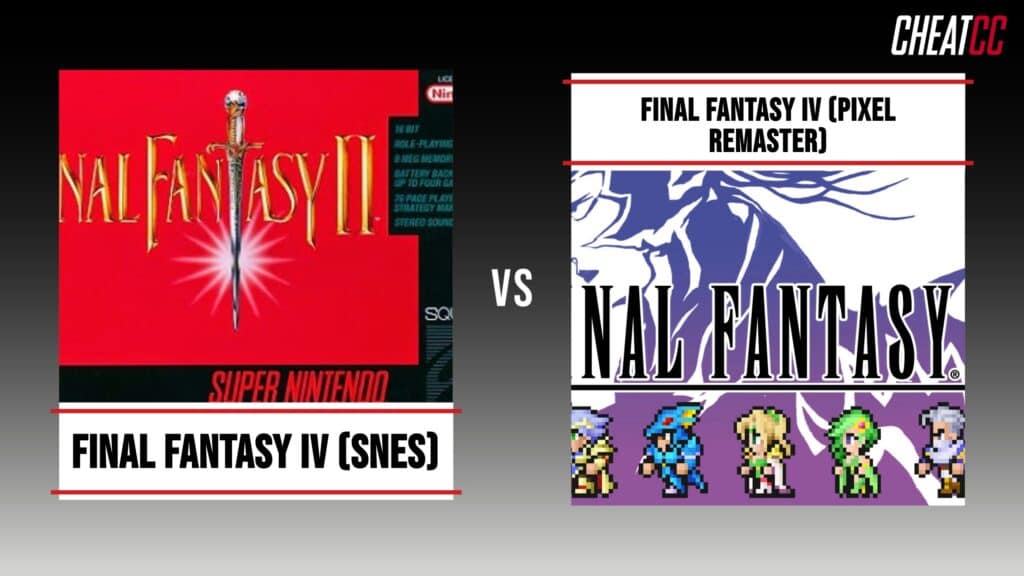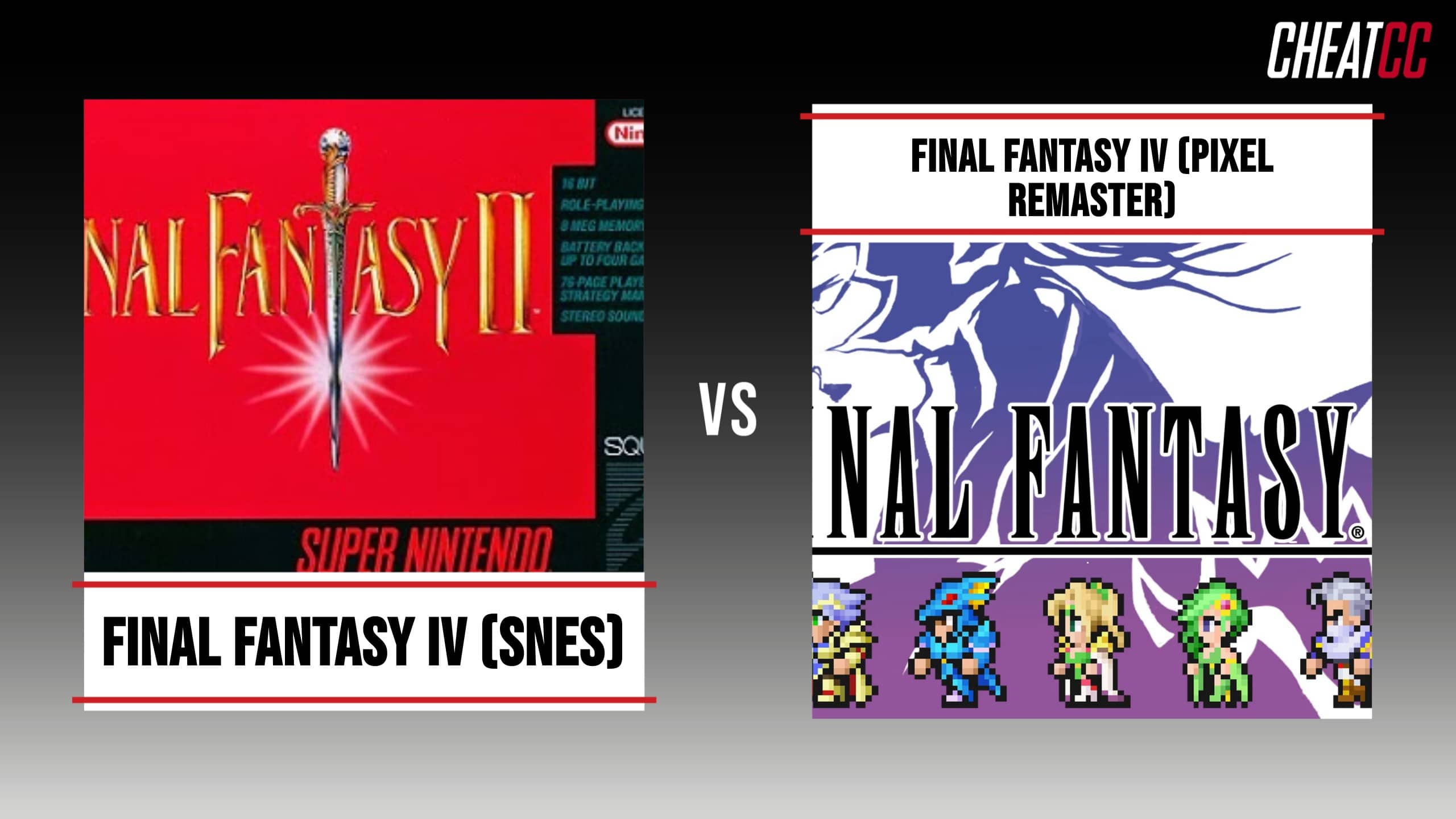Just over a year after the first Final Fantasy would make its Western debut on the NES, Nintendo would bring its next-generation Super Nintendo Entertainment System to North America. Coinciding with the system’s launch in Western territories was the arrival of the fourth game in the Final Fantasy series, receiving the convenient name change to Final Fantasy II on the SNES to avoid player confusion over having missed out on two whole games in the franchise. Contrary to what publisher Square had done with the release strategy of the older games in the series, Final Fantasy IV was developed concurrently with its localization so that the game could arrive stateside at roughly the same time as in its native Japan.
The gamble would prove to be a wise one on Square’s part, with Final Fantasy II being one of the killer apps for the SNES in the months following the system’s launch. After the original Final Fantasy‘s introduction to the JRPG genre to millions of American fans, Final Fantasy II would be a welcome follow-up while also being a massive leap forward in terms of complexity and quality. However, despite its localization during the development process, there are several key differences between the Super Famicom version of Final Fantasy IV and the Western Final Fantasy II.
The recent Pixel Remasters re-releases of the first 6 games in the Final Fantasy series update all of the titles to have consistent visual fidelity alongside updates to their scripts and quality of life improvements, meaning the Pixel Remaster of Final Fantasy IV has quite a few notable differences from the version releasing on SNES as Final Fantasy II.
Final Fantasy IV vs Final Fantasy IV Pixel Remaster: Side-by-Side Comparison

Other than the obvious difference in their cross-cultural naming conventions, the Pixel Remaster version of Final Fantasy IV is substantially different from the version SNES owners would experience in 1991 as Final Fantasy II. Not only does the newest version of one of the franchise’s all-time greatest entries retain more of the original script, it also uses the original spell names and skews closer to the notoriously difficult balancing of the Japanese original over the easier SNES localization. Additionally, the visual and audio updates to all of the Pixel Remaster games make certain effects look different from their original 16-bit renders. And, unlike the PSP and GBA versions of Final Fantasy IV, the Pixel Remaster contains no extra dungeons or deviations from the original’s main quest.
| Characteristic | Final Fantasy IV (SNES) | Final Fantasy IV (Pixel Remaster) |
|---|---|---|
| Release Date | July 19, 1991 (Super Famicom) November 23, 1991 (SNES) | July 28, 2021 (PC and Mobile) April 19, 2023 (PS4 and Switch) |
| Platforms | Super Famicom (Final Fantasy IV) SNES (Final Fantasy II) | PC, PS4, Nintendo Switch, iOS, Android |
| Total Sales | 1.5 million (Japan) 340,000 (North America) | 300,200 + |
| Publisher | Square | Square Enix |
| Elemental Spell Names | Final Fantasy II uses the following names for elemental spells: Fire Ice Lit | The Final Fantasy IV Pixel Remaster returns elemental spell names to their original versions consistent across the series: Fire Blizzard Thunder |
| Script Changes | SNES release of Final Fantasy II removes key subplots and changes any references to Christianity or religion | Utilizes the script revisions from the Game Boy Advance version that adheres closely to the Japanese original |
| Gameplay Differences | Significantly lower difficulty for Western audiences | Utilizes the revised difficulty balancing of the Game Boy Advance version of Final Fantasy IV |
| Bestiary | ✅ | |
| Mini-Map | ✅ | |
| Boost Functions | ✅ |
Final Fantasy IV vs Final Fantasy IV Pixel Remaster: 5 Must-Know Facts
Here are 5 must-know facts when comparing the differences between the SNES release of Final Fantasy IV to its Pixel Remaster version:
- The Pixel Remaster release of Final Fantasy IV utilizes the script from the Game Boy Advance version, which is mostly identical to the original script with some slight tweaks to dialogue and cleaning up for its localization. Comparatively, the SNES release of Final Fantasy II removes several key dialogue exchanges and subplots essential to character development.
- The NES release of Final Fantasy would somewhat suffer from the limitations of converting a Famicom Disk System title to a standard ROM cartridge, resulting in strict limits on how much text could appear on-screen at any given time. This would result in the names of several spells changing, which Final Fantasy II would repeat to avoid confusing players.
- The original release of Final Fantasy IV on Super Famicom is one of the more notoriously difficult games in the series, resulting in Square significantly lowering the difficulty curve for its Western release. The SNES version of the game (Final Fantasy II) would later be released in Japan as the “Easy Type” version years later.
- The Boost functions in the PS4 and Switch releases of the Pixel Remaster series can have a significant impact on how difficult and time-consuming each of the Final Fantasy games are. Thanks to the EXP and Gil Boosts available in the Final Fantasy IV Pixel Remaster, much of the necessary grind is made much more manageable.
- Several different versions of Final Fantasy IV have seen release throughout the years, including a WonderSwan Color release, a PS1 version, and now-defunct Wii Virtual Console versions (among others). Each of these contribute to Final Fantasy IV being one of the best-selling games among the early titles.
Final Fantasy IV vs Final Fantasy IV Pixel Remaster: A More Accurate Script
Because Square and Nintendo held concerns regarding Western audiences’ reaction to some of the religious symbolism and Judeo-Christian references in the game’s story and character designs, much of the script would receive significant edits as part of Final Fantasy IV’s localization into Final Fantasy II. Additionally, entire subplots would not make it into the Western release of the game, such as the side-story where players learn about Kain’s backstory and his relationship with his father (also a Dragoon of Baron). Conversely, the Pixel Remastersversion retains most of the original script, basing it on the revisions from the Game Boy Advance release of the game from 2005.
Final Fantasy IV vs Final Fantasy IV Pixel Remaster: Return to Series Naming Conventions
Western audiences missing out on Final Fantasy II and III for the Famicom would prompt Square to change the name of Final Fantasy IV for its Western release. Additionally, Final Fantasy wouldn’t be released on the NES in North America until 1990, prompting Square to make several name changes within the game to more closely match the one series title Western audiences were familiar with. The result is that Final Fantasy II features elemental spell names like “Fire 1, Fire 2, Fire 3” instead of the series’ traditional naming of “Fire, Fira, Firaga”. The Pixel Remasters release changes the naming convention of spells back to the original, making them more consistent with the other first 6 games in the series that are part of the Pixel Remasters.
Final Fantasy IV vs Final Fantasy IV Pixel Remaster: Difficulty Balancing
Final Fantasy IV is the first game in the series to introduce the revolutionary Active-Time Battle (ATB) System that sees foes act concurrent to the player’s party’s actions. This system would originally result in enemies having far more chances to act before characters were properly leveled, making the original release of the game incredibly difficult in the early hours. The localization of SNES (Final Fantasy II) would feature action timers that significantly skew in favor of the party, drastically lowering the difficulty in the process. The Pixel Remaster of Final Fantasy IV not only re-balances the action timers for both enemies and characters, but it also provides brand-new stat balancing to equipment and weapons. The result is that the game is closer to the original’s difficulty in some regards but much more forgiving in others.
Final Fantasy IV vs Final Fantasy IV Pixel Remaster: Easing the Grind
In terms of the greatest quality of life features that the Pixel Remasters release affords, perhaps no other addition can match the utility of the Boost functions. Currently only available on the PS4 and Nintendo Switch versions of the game, players can go into their Configuration menu at any time during gameplay and adjust the multipliers for their Experience and Gil gain, choosing to either make the game harder (by halving Gil and EXP gains after battle) or significantly easier. Not only do these Boosts have the benefit of making the game more accessible for those just interested in the story and characters, but they also help the game’s total runtime to decrease significantly and remove much of the time commitment necessary to grind out the party to the level 99 progression cap.
Bottom Line
For those who grew up with Final Fantasy on the NES as their first genuine RPG, the release of Final Fantasy II would prove to come at the perfect time. Not only is it a welcome visual and audio upgrade over the series’ first adventure, but its story and cast of characters still rank among many longtime fans’ favorites across the entire series, almost single-handedly evolving the art of storytelling in interactive media at a time when many lifelong gamers were just breaking into the hobby. Thankfully, the Pixel Remasters version of the game retains all of the charm of the original through its audio and visuals while adjusting both its gameplay and presentation to serve as arguably the definitive version of one of the most beloved games in the series.
